Tillandsia Curly Top
Click thumbnails for full size, scaled to a new window.
Tillandsia Curly Top
cultivar of T. ionantha that was selected by Chris Larson from stock held at Gardenworld, Victoria, Australia. Origin is somewhat clouded because this company did import from Alfred Lau in Mexico and later from sources in Guatemala. Known for its extra curly leaves, if grown in the tropics or a humid glasshouse. Mature size is to about 15cm high and 9cm wide. In dry heat conditions it tends to mature sooner, flower smaller and the curly leaves are not as pronounced. Registered by C Larson 3/2011 Ionantha Group
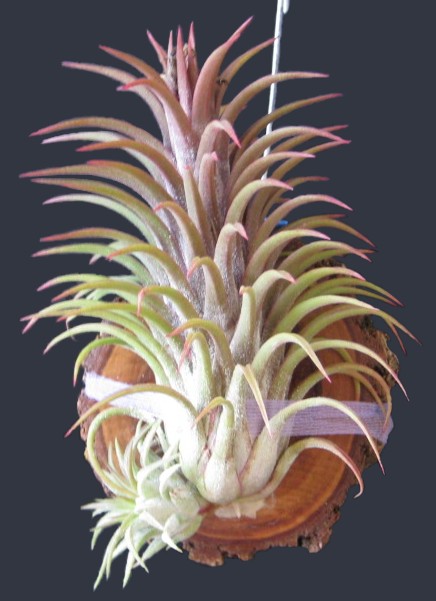
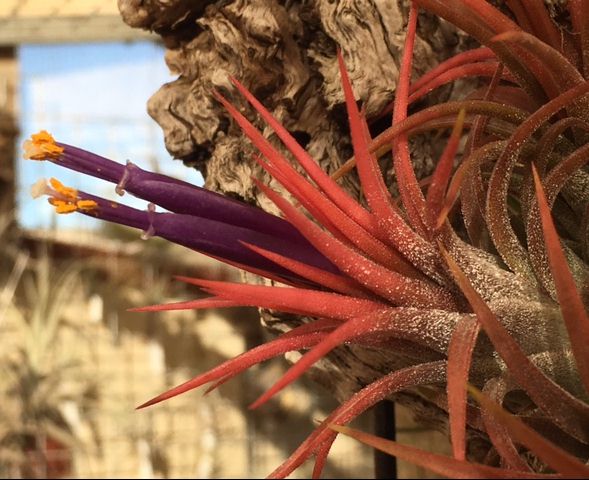
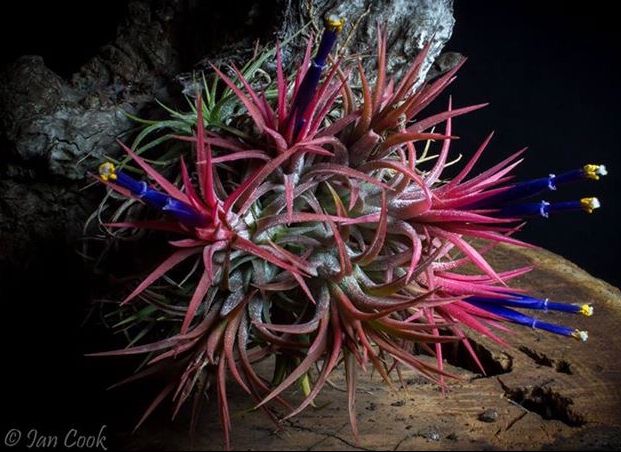
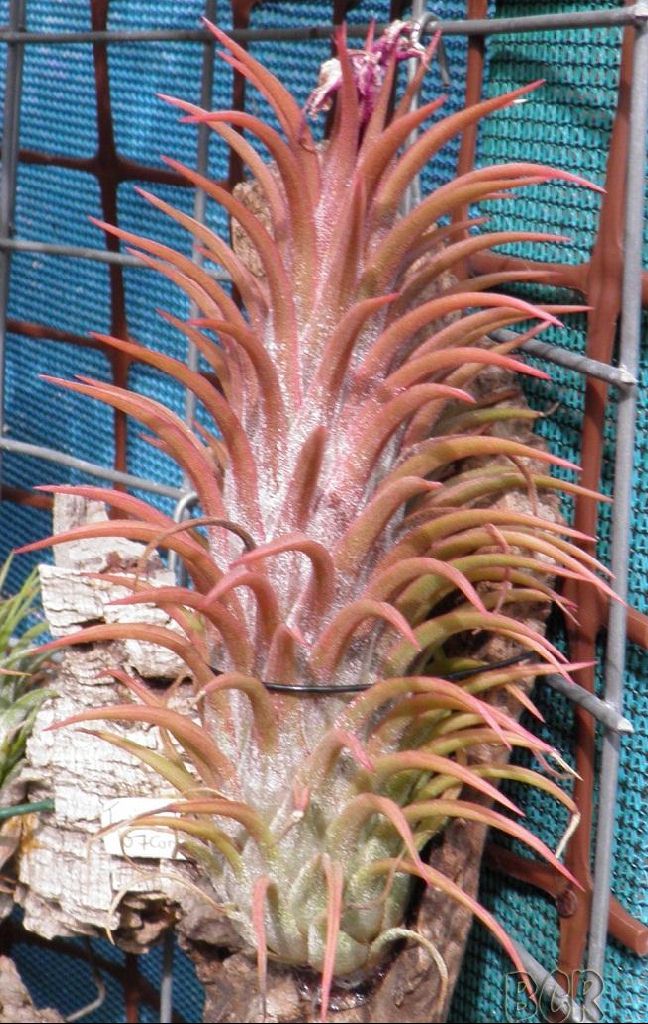
| Bob Hudson 12/12 |
Ray Clark 12/16 |
Ian Cook 12/16 |
Derek Butcher |
Chris Larson ... "Some plants when grown in some conditions, will produce different foliage. Check the BCR to see what the plant looked like when Margaret got it from Collectors Corner. The dry Adelaide environment is not condusive to the elongated growth - at least with this plant. To reach a large size often these plants need to grow for a number of years before they flower.
Sometimes the plants flower earlier and the effect is not realized. If the pups are taken back to the original environment it should revert to that other growth - where other forms are not likely to.
Note that this plant has, for a few generations, not shown the attributes it had when I gave it to Margaret. That shows that it probably will continue in this manner unless the factors which caused it to grow like that in the first place are restored.
Still a nice little plant."
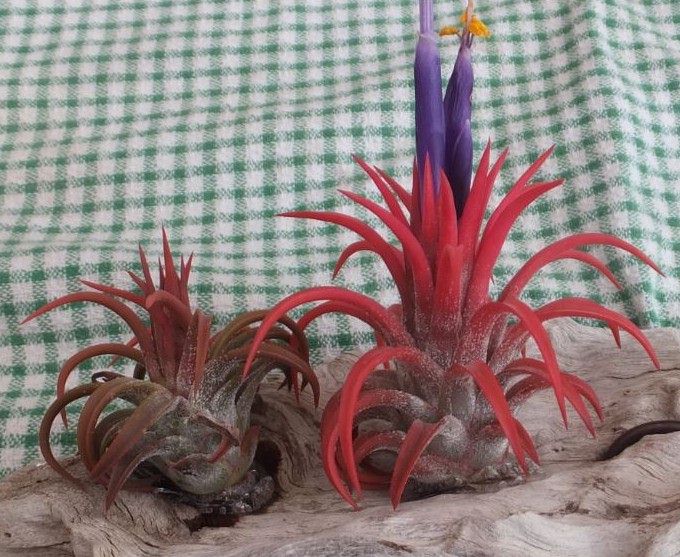 Adam Bodzioch ... "as ionantha Lau , Mex (the flat one) courtesy of Chris Larson."
Adam Bodzioch ... "as ionantha Lau , Mex (the flat one) courtesy of Chris Larson."
Chris Larson ... "This one has the potential to grow into T. ionantha Curly Top. Something I didn’t know when you got yours from me. It should be named so.
The history :-
Sourced from Lau before my time at Collectors Corner – early 90s.
There was one I pulled aside and gave to Bob Hudson quite a few years back which he called T. 'Curly Top'. As with all of these ionanthas they will react under certain circumstances in a particular way. (You will note neoregelias look different in the tropics than they do in the southern climates as well)
Then I noticed some that have a tendency to have pups which are very flat. So I pulled these aside.
Later I found these flat ones grow into the T. Curly Top.
The relevance to this story is that I think these plants are both the same. And (I think) Bob has parted with his as T. Curly Top & I have parted with T. ionantha (flat one or without calling it anything). So I think they should all be called T. Curly Top."
2020
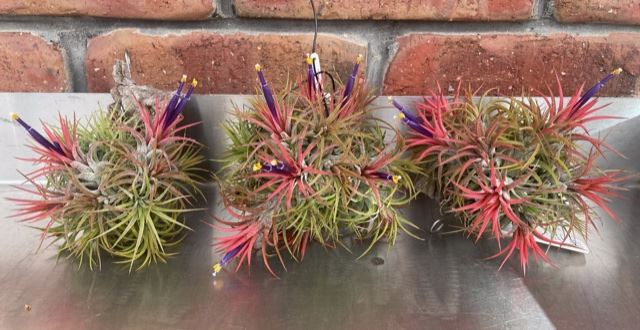
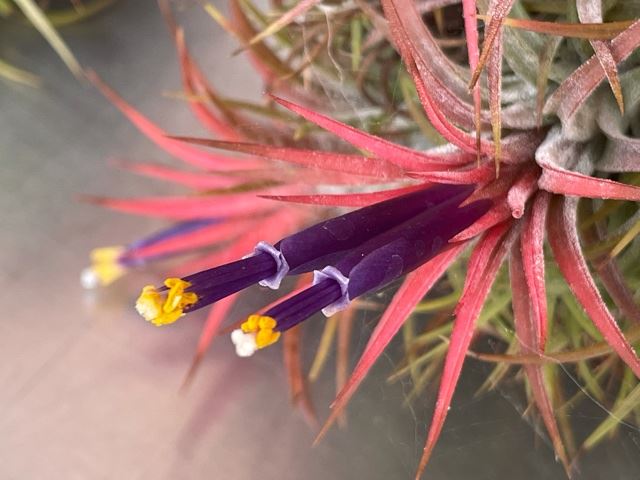
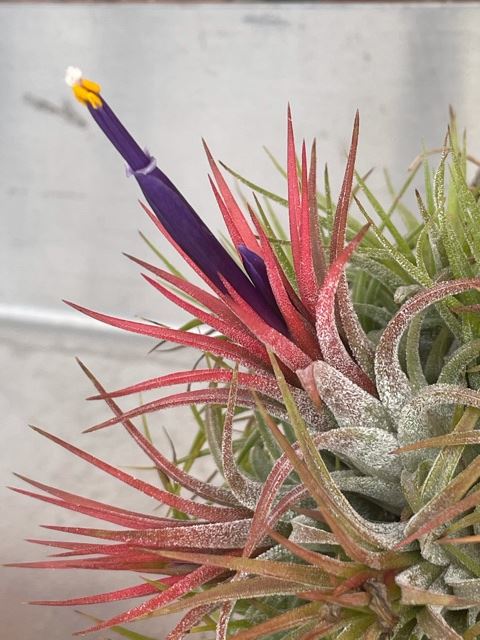 Ray Clark ... "T. Curly Top. As our mate Bob Hudson would say, you can’t have too many! And three ain’t enough!"
Ray Clark ... "T. Curly Top. As our mate Bob Hudson would say, you can’t have too many! And three ain’t enough!"
Bob Hudson ... "It would be good if they were T. ionantha Curly Top ????
I think they are Just T. ionantha Curly leaf. But i agree you just cannot have too many."
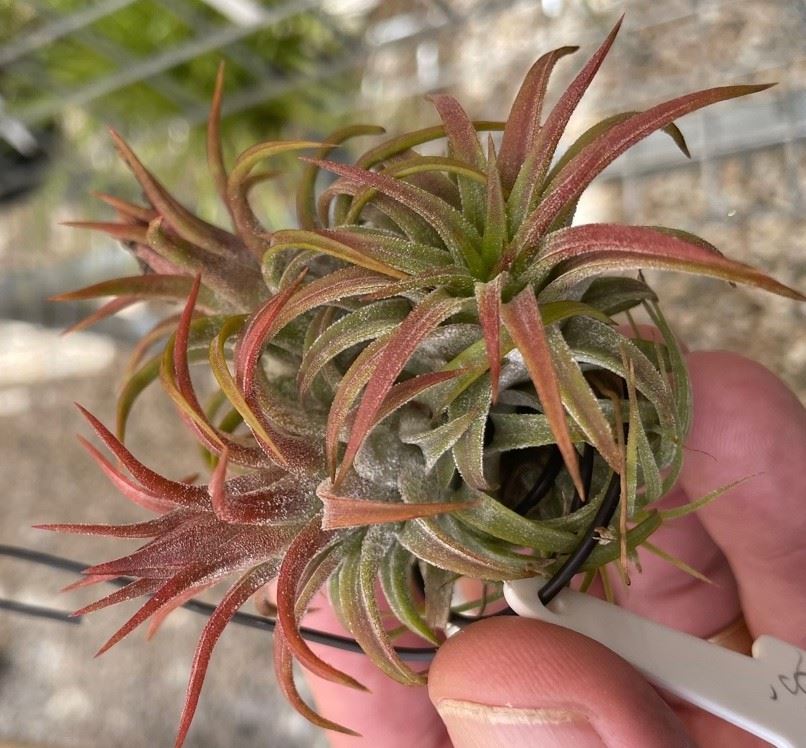
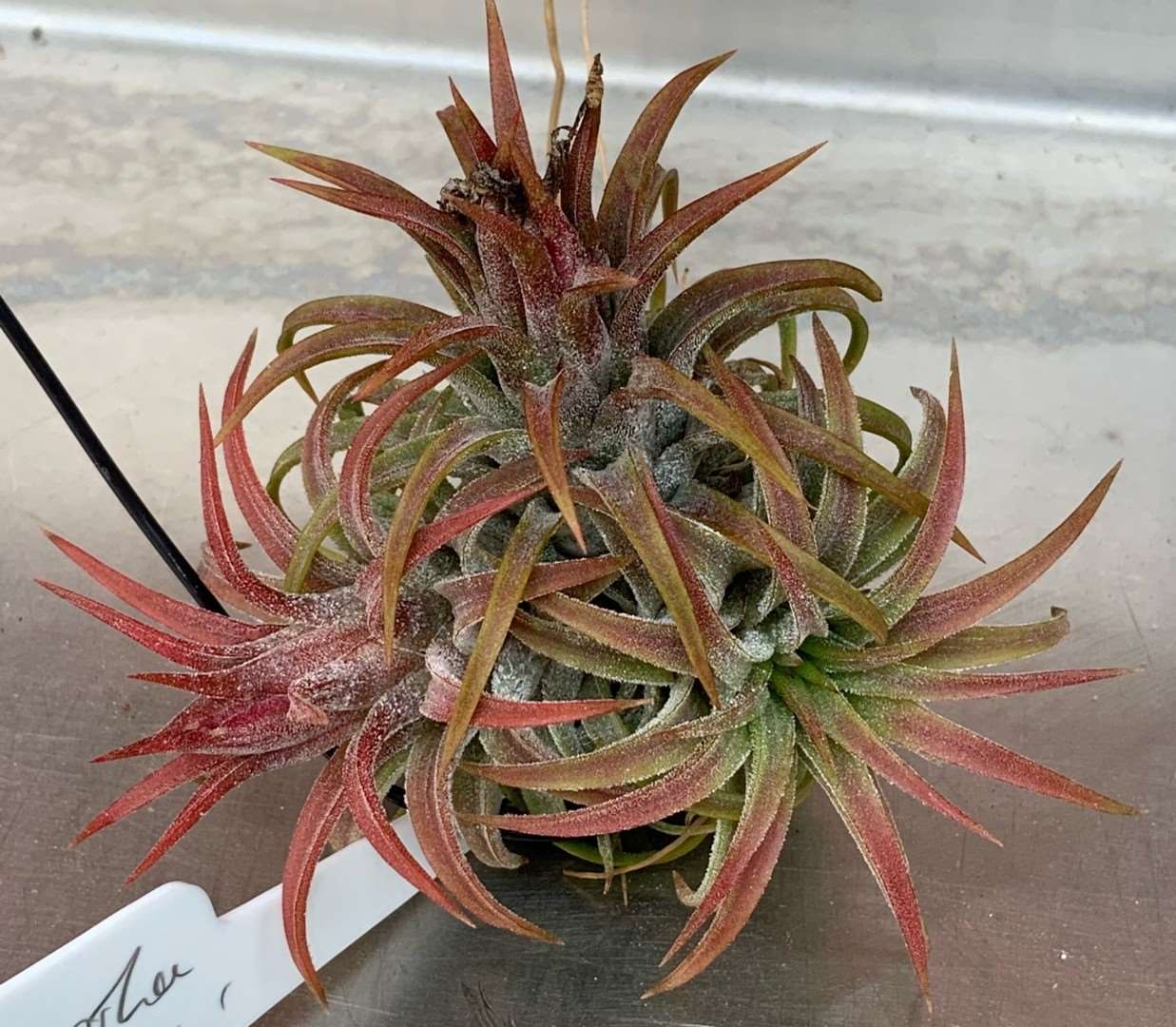
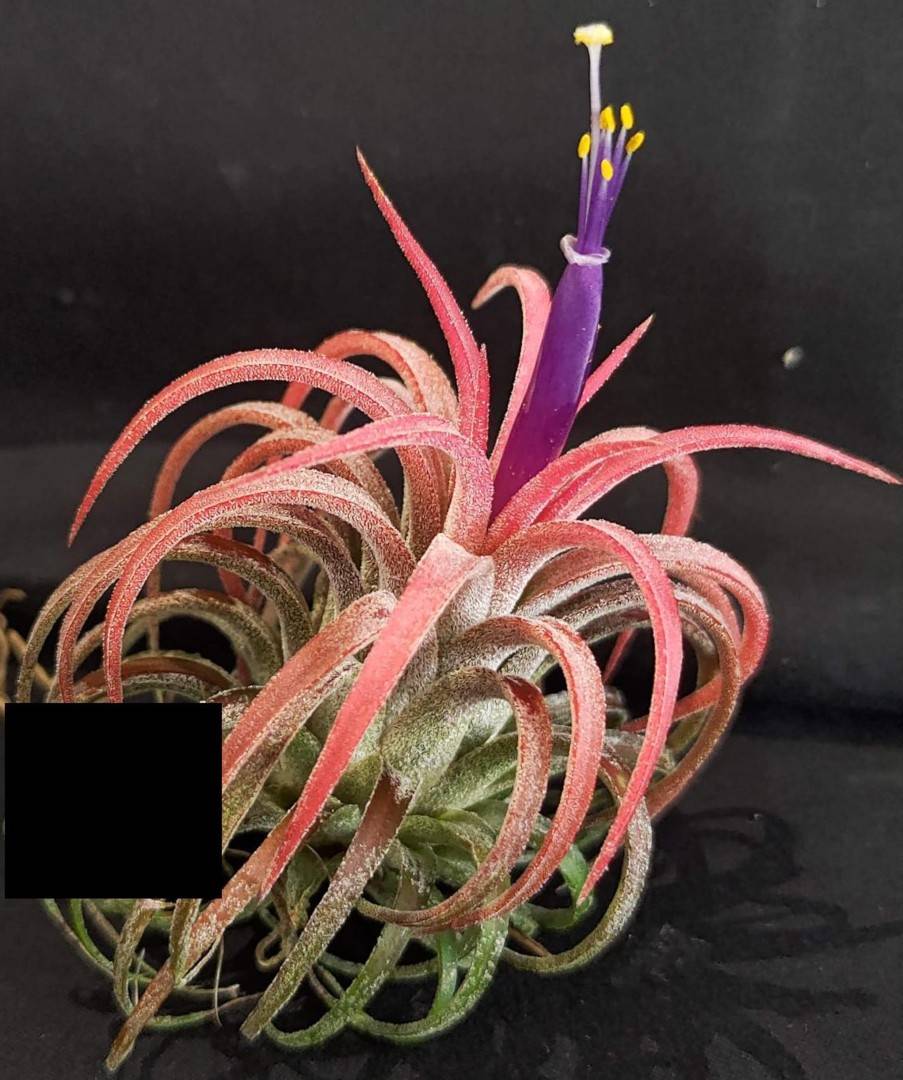
| Ray Clark 11/20 T. 'Curly Top' 2nd batch |
Chris Larson 11/20 T. 'Curly Leaf' |
Ray Clark ... "Gidday Bob, initially I was disappointed to read your comments, I like to have correct names on tags but by the same token I try to resist changing names on tags willy-nilly.
Another collector contacted me today and set me straight with the history of T. ’Curly Top’. I did my checks and found that the three plants that I posted where from one plant that I got from Chris Larson ages ago but I do have one collected more recently also from Chris. If anyone is keen go to BinA and check out the conversations about Curly Top, that should clear up any doubts I reckon, thanks to Bob and Nick for setting me straight. The plant in the new pic is a relatively recent acquisition."
Chris Larson ... "T. ionantha Curly Top came from a group of T. ionantha imported from Lau back in the early 90s. One lot of plants, vegetatively produced, had a very stocky curly leaf. I assumed that these plants came from one particular plant - but due to Collectors Corners production methods - I couldn't be sure of this. Bob Hudson got one of these - probably the best - and registered it.
I gathered the rest of the plants that I thought were the siblings, which all exhibited what I thought to be the exact same traits as the registered T. ionantha Curly Top. I then propagated these. This is what you have Ray.
The other plants in that shipment (T. ionantha "Mexico Lau") all look like yours, Ray. But those I have that are sold as T. ionantha "Mexico Lau" that look like yours never develop the same traits as the T. ionantha Curly Top group, when grown side by side.
So the answer is - I reckon the traits exhibited by your plant is due to cultural conditions. It will be one of the T. Curly Top, but under your condition it will not show up in the same way as it does in Qld. In much the same way as Neoregelias in Qld can have rows of leaves stacked up, and when the same plant is grown in the south it doesn't ever look the same. Same plant, same genes. We can get it here in Melbourne, but only in a heated greenhouse with high humidity.
The T. ionantha Curly Leaf is a plant from out of Asia, only a recent import - but has been around for a little while. I assume that this plant is under commercial production, and therefore spread around the world under this name. A very nicely recurved plant. It is quite stunning, as seen in the attached photo. Great colour, great shape.
T. Curly Leaf does not have the wider over-lapping bases of the leaves of Lau's T. ionantha."
Ray Clark ... "Chris has raised a point that was in the back of my mind, is the appearance of my (Curly Tops) due to climatic conditions over a longish period? Recently when cross checking names I have taken the date that I got them into account and as Chris says T. ’Curly Leaf’ is a more recent addition to the BCR. The plants in my original post came from Chris in early 2011. The plant in the later attached pic is from Chris also and a much more recent acquisition so I will watch how it behaves over time.
In the meantime my labels won’t change, take care all."
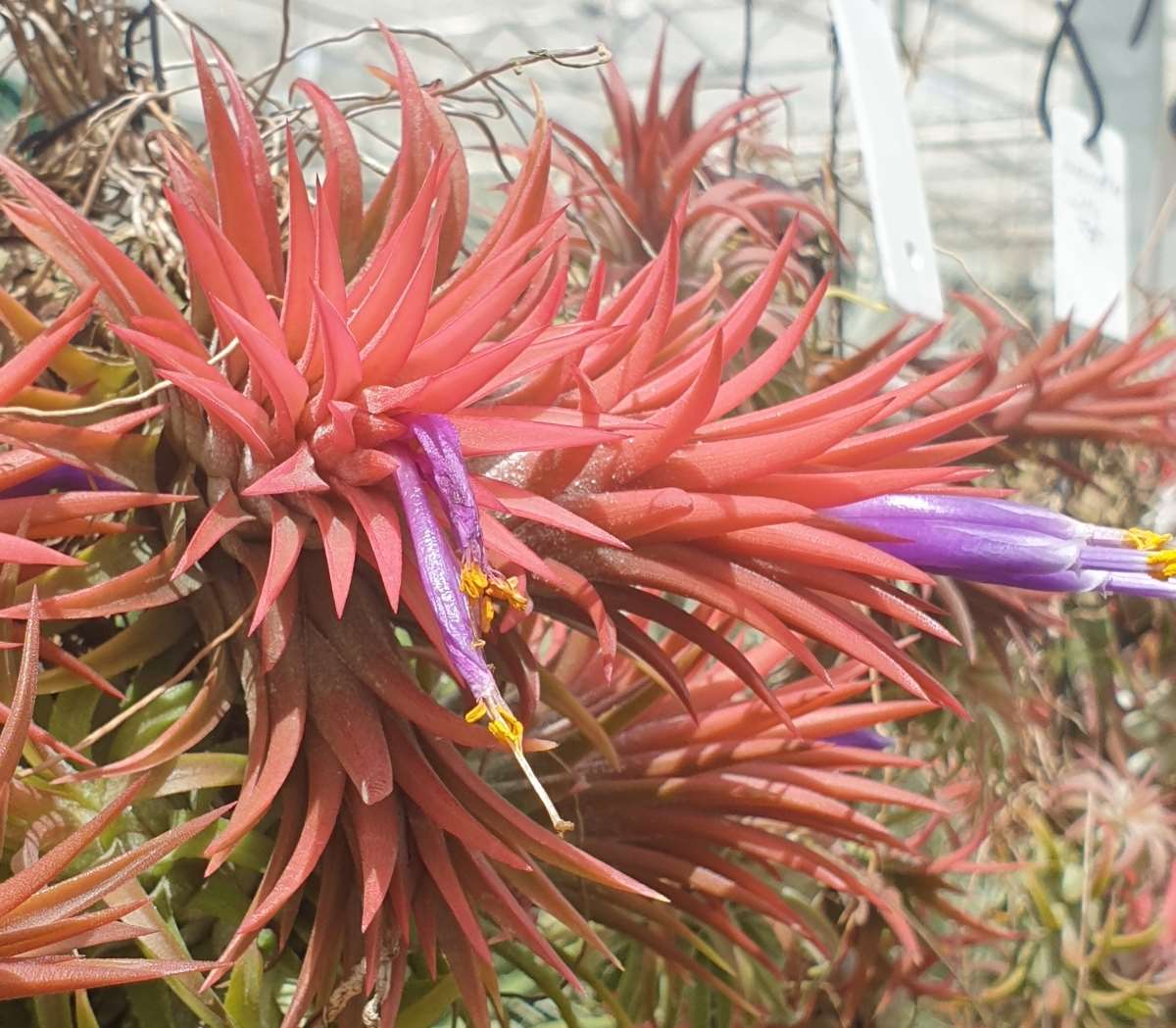
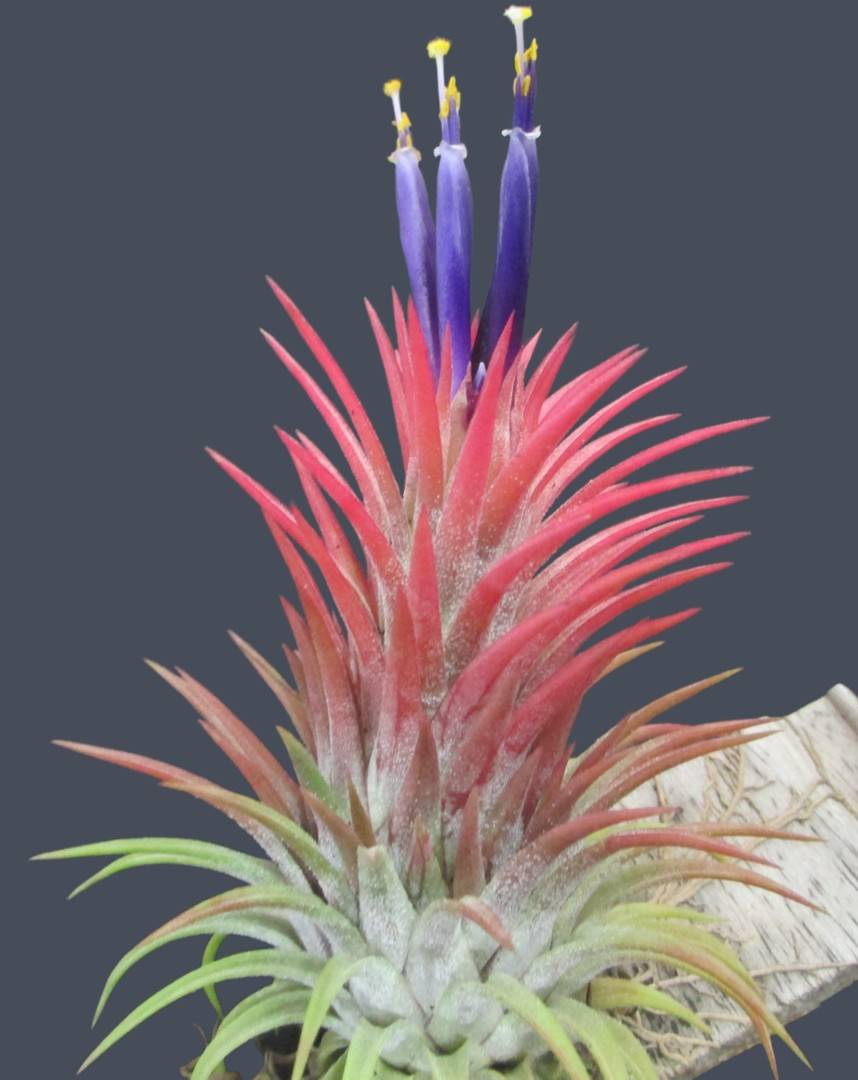
| Chris Larson 10/21 |
Bob Hudson 05/22 |
Chris Larson ... "T. ionantha 'Curly Top' is one of those odd plants. It grows in different ways in different circumstances.
The thing about cv names is that they apply to plants when grown with certain traits. Traits that are there, at times, only due to culture. If you grow them a different way , then the traits are different. But the cv name is there as it is possible to achieve that trait when the right conditions are supplied. With this plant it has regularly "gone curly" many times/most times over the past 30 years."
Updated 20/05/22














